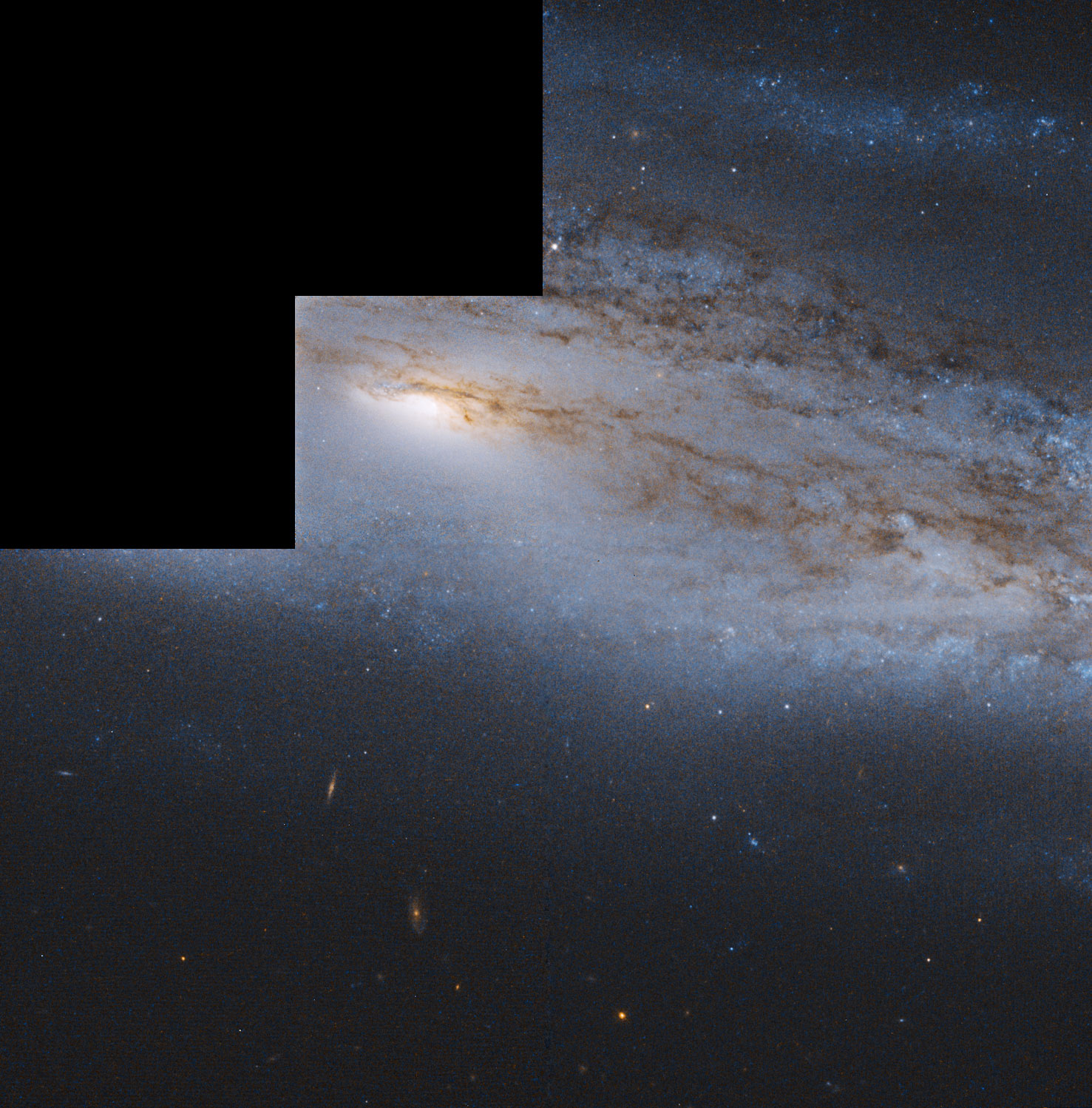The Cosmos with M98
This image of M98 was taken in 1995 with Hubble’s Wide Field and Planetary Camera 2. Its stair-step pattern results from the design of the camera. These observations were taken in infrared and visible light and feature a portion of the galaxy near the central core. Although it is a member of the Virgo cluster of galaxies, M98 appears in the neighboring constellation of Coma Berenices. Hubble’s observations of M98 were part of an examination of the cores of galaxies in the Virgo cluster.
M98 contains about a trillion stars as well as an abundance of neutral hydrogen gas and interstellar dust. Because of the high amounts of gas and dust, there are numerous star-forming regions in the galaxy, especially in its nucleus and arms. The nucleus itself is “active,” meaning that the center of the galaxy is more luminous than the rest of the galaxy. M98 is located approximately 44 million light-years away and is traveling toward our Milky Way galaxy.
M98 was discovered in 1781 by Pierre Méchain, a colleague of Charles Messier, and is one of the faintest objects in Messier’s catalog. It has a magnitude of 10.1, and observers will need at least a medium-sized telescope to see M98 well. The best time to observe this galaxy is in May.
